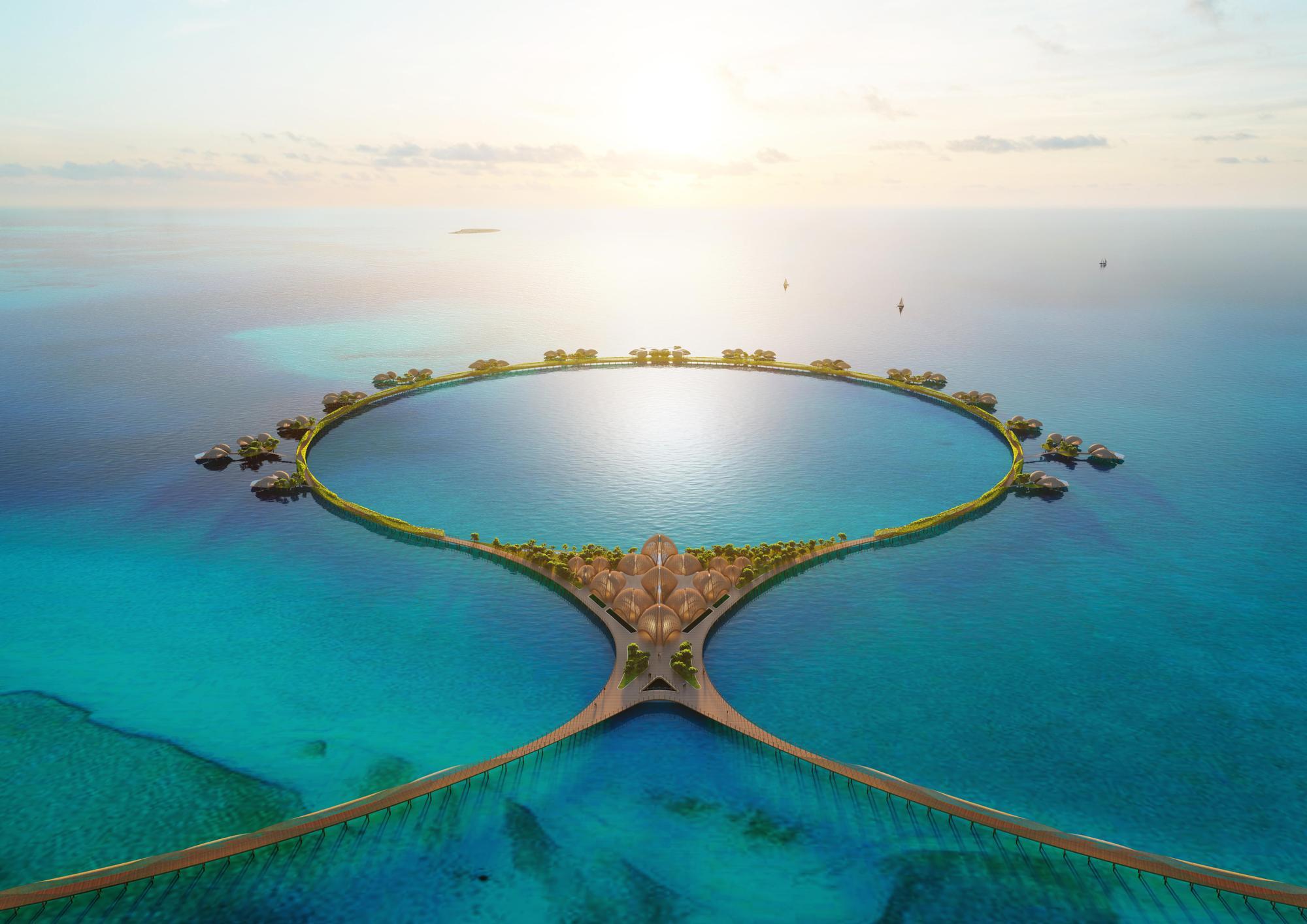
The Red Sea, located between Africa and Asia, is a fascinating body of water that has captivated people for centuries. Known for its stunning coral reefs, vibrant marine life, and crystal-clear waters, the Red Sea is a popular destination for divers and snorkelers from around the world. But beyond its natural beauty, the Red Sea holds many surprising facts that might astonish even the most knowledgeable explorers.
In this article, we will delve into 13 intriguing facts about the Red Sea that will leave you in awe. From its unique geological features to its historical significance, the Red Sea offers a wealth of discoveries that go beyond its mesmerizing underwater world. So, prepare to be amazed as we uncover the hidden secrets of this remarkable body of water.
Key Takeaways:
- The Red Sea is a fascinating and diverse ecosystem, home to over 1,200 species of fish and unique marine phenomena like bioluminescent plankton and stingless jellyfish.
- With its warm waters, rich history, and thriving scuba diving industry, the Red Sea offers a unique blend of natural beauty, adventure, and historical significance.
The Red Sea is one of the saltiest bodies of water in the world.
The Red Sea has an extremely high salt concentration, with levels reaching 40% in some areas. This makes it one of the saltiest bodies of water on the planet.
The Red Sea is home to over 1,200 species of fish.
With its rich coral reefs and diverse marine life, the Red Sea is a haven for underwater creatures. From colorful tropical fish to majestic sharks and dolphins, the variety of species is truly remarkable.
The Red Sea is not actually red.
Contrary to its name, the Red Sea does not appear red in color. The name is believed to have originated from the red-colored algae that used to bloom in its waters, giving it a reddish tint.
It is one of the warmest seas in the world.
The Red Sea maintains a relatively high temperature throughout the year, with an average range of 68 to 86 degrees Fahrenheit. This warmth attracts a wide range of marine life and makes it a popular destination for divers and snorkelers.
The Red Sea is a popular destination for shipwreck diving.
Due to its long history as a major trade route, the Red Sea is dotted with fascinating shipwrecks that have become popular dive sites. Exploring these underwater relics offers a unique glimpse into the region’s maritime past.
The Red Sea is bordered by Africa and Asia.
Stretching over 1,300 miles, the Red Sea is located between the continents of Africa and Asia. It separates the two landmasses and is a vital trade route connecting the Middle East with Africa and Europe.
The Red Sea has unique coral reefs.
The coral reefs in the Red Sea are known for their incredible biodiversity and vibrant colors. They are home to a wide variety of hard and soft corals, providing a breathtaking underwater landscape.
The Red Sea has a high salt production industry.
Due to its high salt concentration, the Red Sea is a significant source of salt production. The extraction of salt from its waters is an important industry in countries bordering the sea.
The Red Sea is a popular destination for beachgoers.
With its pristine white sandy beaches and crystal-clear waters, the Red Sea offers an idyllic setting for beach lovers. The coastline boasts numerous resorts and beach towns that attract tourists from around the world.
The Red Sea has unique marine phenomena.
The Red Sea is known for its mesmerizing marine phenomena, such as bioluminescent plankton that glow at night, stingless jellyfish, and colorful sea turtles. Exploring these natural wonders is a surreal experience.
The Red Sea has historical significance.
The Red Sea has played a crucial role in maritime trade and exploration for centuries. It has witnessed the passage of ancient civilizations, including the Egyptians, Greeks, Romans, and Arabs, leaving behind a rich historical legacy.
The Red Sea has a thriving scuba diving industry.
With its clear waters, diverse marine life, and captivating underwater landscapes, the Red Sea has developed a thriving scuba diving industry. It offers a myriad of diving spots, catering to both beginners and experienced divers.
The Red Sea is a natural wonder.
The Red Sea’s unique ecosystem and breathtaking beauty make it a natural wonder worth protecting. Efforts are being made to safeguard its delicate coral reefs and maintain its ecological balance for generations to come.
Conclusion
The Red Sea is a remarkable geographical feature that holds many surprises for those who explore its depths and shores. From its unique ecosystem and rich marine life to its fascinating historical significance and geological wonders, the Red Sea offers a wealth of wonders to discover. Whether you are a scuba diving enthusiast, a history buff, or simply someone seeking a breathtaking natural beauty, the Red Sea is sure to leave you awe-inspired.With its vibrant coral reefs, rare marine species, and ancient shipwrecks, the Red Sea is a true paradise for divers and snorkelers. Its warm, crystal-clear waters provide an ideal setting to explore the underwater wonders and experience close encounters with majestic sea creatures. The Red Sea also boasts a rich heritage, with ruins and relics dating back thousands of years, offering a glimpse into the region’s ancient civilizations.Whether you’re planning a vacation or simply interested in learning more, the Red Sea is a destination that promises adventure, discovery, and an unforgettable experience. So pack your snorkel gear, grab your camera, and get ready to immerse yourself in the enchanting world of the Red Sea.
FAQs
1. What makes the Red Sea unique?
The Red Sea is renowned for its vibrant coral reefs, which are home to a diverse range of marine life. It is also known for its high salt content, which gives its waters a reddish hue.
2. Can you see dolphins in the Red Sea?
Yes, dolphins are commonly spotted in the Red Sea. They are playful creatures and often approach boats, giving visitors a chance to admire them up close.
3. Are there any dangerous species in the Red Sea?
While the Red Sea is generally safe for swimmers and divers, there are some species to be cautious of, such as the lionfish. It is important to follow local guidelines and avoid touching or disturbing any marine life.
4. Can you visit historical sites along the Red Sea?
Absolutely! The Red Sea region is steeped in history, with ancient ruins and archaeological sites scattered along its shores. Popular sites include the ancient city of Petra in Jordan and the temples of Luxor and Abu Simbel in Egypt.
5. Is the Red Sea a popular diving destination?
Yes, the Red Sea is a world-renowned diving destination. Its warm waters, excellent visibility, and abundant marine life make it a paradise for divers of all levels of experience.
Was this page helpful?
Our commitment to delivering trustworthy and engaging content is at the heart of what we do. Each fact on our site is contributed by real users like you, bringing a wealth of diverse insights and information. To ensure the highest standards of accuracy and reliability, our dedicated editors meticulously review each submission. This process guarantees that the facts we share are not only fascinating but also credible. Trust in our commitment to quality and authenticity as you explore and learn with us.


